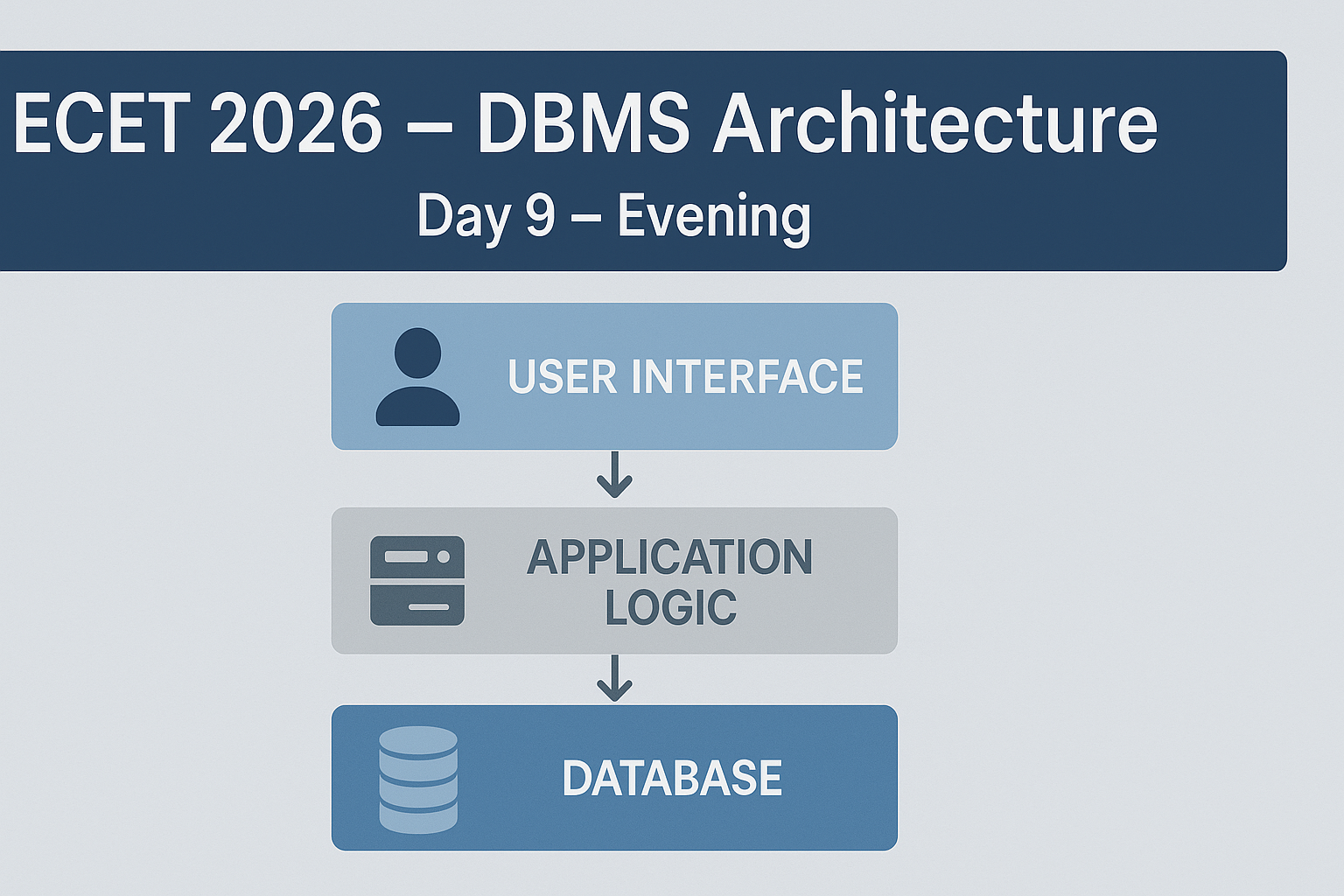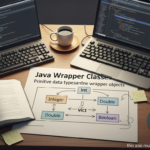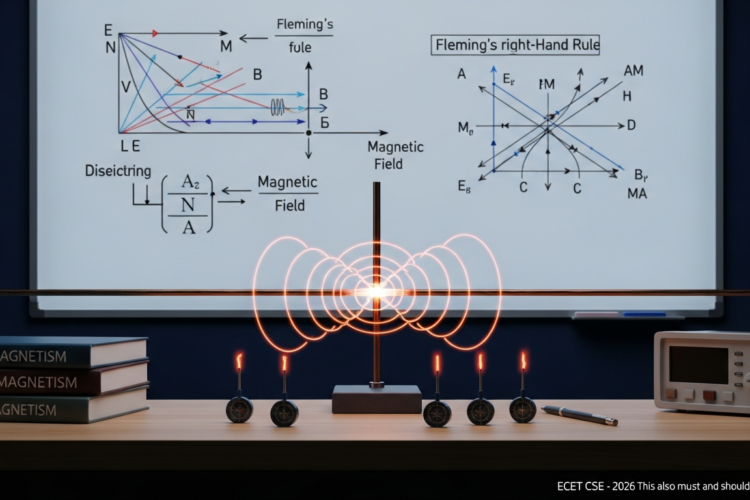
In the ECET 2026 syllabus for Computer Science (CSE) diploma students, Database Management Systems (DBMS) is one of the most scoring and conceptual subjects. Among the key topics, the 3-tier architecture of DBMS is frequently asked. Understanding how data flows from user to database is essential not only for MCQs but also for real-world software projects. This blog explains the concept in simple terms, followed by 10 ECET-based MCQs with answers and explanations.
📘 Concept Notes – DBMS 3-Tier Architecture
🧱 What is DBMS Architecture?
DBMS architecture refers to the way a database system is structured. The 3-tier architecture is the most widely used because it separates concerns, improves security, and supports scalability in enterprise applications.
🧠 Three Tiers of DBMS Architecture:
- Presentation Tier (External Level):
- Also called the user interface layer.
- It is the topmost layer where users interact with the system.
- Examples: GUI, forms, web browsers.
- Users request data using SQL or front-end tools.
- Application Tier (Logical/Conceptual Level):
- Also called the middle layer or business logic layer.
- Controls the logic of the application and processes user requests.
- Handles query processing, validation, and communication between UI and database.
- Acts as a bridge between the user and the database.
- Data Tier (Internal Level):
- The bottom layer where the actual database resides.
- Manages physical storage of data (tables, indexes, files).
- Ensures data retrieval and manipulation via SQL queries and DBMS software.
🎯 Advantages of 3-Tier Architecture:
- Modularity: Each layer is independent.
- Security: Data access is controlled through the application layer.
- Scalability: Easy to scale layers independently.
- Maintenance: Easier to update or debug specific layers.
🔟 10 Most Expected MCQs – ECET 2026 [DBMS Architecture]
Q1. How many layers are there in 3-tier architecture of DBMS?
A) 1
B) 2
C) 3
D) 4
Q2. Which layer interacts directly with the user?
A) Application layer
B) Data layer
C) Presentation layer
D) Internal layer
Q3. The main purpose of the application layer is to:
A) Store data physically
B) Process user requests and run business logic
C) Display UI
D) Backup database
Q4. Which layer is responsible for data storage and retrieval?
A) Application
B) Presentation
C) Data
D) Logical
Q5. What does the Presentation Tier deal with?
A) SQL execution
B) Database indexing
C) User Interface
D) File System
Q6. Which of the following is an advantage of 3-tier architecture?
A) Increased complexity
B) Poor security
C) Code duplication
D) Modularity
Q7. Which tier contains the actual DBMS?
A) Application
B) Presentation
C) Data
D) Middle
Q8. The 3-tier architecture is mainly used to:
A) Improve speed
B) Support multi-user environments
C) Replace cloud systems
D) Reduce database size
Q9. Which layer validates queries before accessing the data?
A) Data tier
B) Application tier
C) Presentation tier
D) External tier
Q10. What happens at the data tier?
A) User input
B) Business rules execution
C) Data is stored in physical format
D) Form design
✅ Answer Key Table
| Q.No | Answer |
|---|---|
| Q1 | C |
| Q2 | C |
| Q3 | B |
| Q4 | C |
| Q5 | C |
| Q6 | D |
| Q7 | C |
| Q8 | B |
| Q9 | B |
| Q10 | C |
🧠 Explanations of All Answers
- Q1 → C: 3-tier architecture has three layers: Presentation, Application, and Data.
- Q2 → C: Presentation layer is where the user interacts (UI).
- Q3 → B: The application tier handles logic and processes user requests.
- Q4 → C: Data tier manages actual data storage and retrieval.
- Q5 → C: The Presentation tier deals with user interfaces like forms and dashboards.
- Q6 → D: 3-tier model is modular and easy to maintain.
- Q7 → C: The DBMS resides in the data tier.
- Q8 → B: It supports scalable, secure, and multi-user environments.
- Q9 → B: Application layer checks and validates user input before hitting the database.
- Q10 → C: Physical data is stored and retrieved at the data tier.
🎯 Why This Practice Matters for ECET 2026
The 3-tier DBMS architecture is a frequently asked topic in C-23 based ECET CSE exams. It’s easy to understand, commonly tested, and relevant for real-time applications. Practicing these MCQs gives you clarity on theoretical and application-based questions. With proper revision, this topic becomes a guaranteed scoring area in your exam.
📲 Join Our ECET Prep Community on Telegram
Get PDF notes, daily MCQs, video sessions, and quick tips for ECET 2026 in one place.
👉 @LearnNewThingsHub



